At Adda247, we are providing questions for the General Awareness section. Today, in this quiz we shall study Economics Questions. Here’s a blog of the Top 30 Economics Quiz for Competitive Exams. As you know Economics GK questions and answers are the very useful topic for Banking, SSC, OPSC & Other state exams Study and Score great marks in the Exam.
Q1. The fundamental concept of Economics about resources is that the resources are
(A) equally distributed
(B) unequally distributed
(C) scarce
(D) unlimited
S1. Ans. (C) scarce
Q2. Consider a world without scarcity of resources. Then what would be the consequences?
(A) All prices would be zero
(B) Markets would be unnecessary
(C) Economics would no longer be a useful subject
(D) All of the above
S2. Ans. (D) All of the above
Q3. Who is considered the founder of Microeconomics?
(A) Adam Smith
(B) John Keynes
(C) Friedrich Hayek
(D) Milton Friedman
S3. Ans. (A) Adam Smith
Q4. Who is considered the founder of modern Macroeconomics?
(A) Adam Smith
(B) John Keynes
(C) Friedrich Hayek
(D) Milton Friedman
S4. Ans.(B) John Keynes
Q5. When analyzing the impact of a variable on the economic system, the other things
(A) must be kept constant
(B) must also be analyzed
(C) must not be taken into consideration
(D) none of these
S5. Ans. (A) must be kept constant
Q6. Inputs are combined with technology to produce outputs. The fundamental inputs (also called factors of production) are
(A) land and capital
(B) land and labor
(C) land, labor, and capital
(D) land, labor, capital, and investment
S6. Ans.(C) land, labor, and capital
Q7. Goods produced to produce yet other goods is called
(A) final goods
(B) capital
(C) investment
(D) resources
S7. Ans. (B) capital
Q8. Which economic term is used to represent inequality in income distribution?
(A) GDP
(B) GNP
(C) Gini
(D) HDI
S8. Ans. (C) Gini
Q9. The value of the good or service forgone by choosing another investment is called
(A) opportunity cost
(B) purchasing power parity
(C) disposable income
(D) consumer price index
S9. Ans.(A) opportunity cost
Q10. The central role of markets is to determine the
(A) quality of goods
(B) quantity of goods
(C) level of income
(D) price of goods
S10. Ans. (D) price of goods
Q11. The branch of economics concerned with overall performance of the economy is known as
(A) Microeconomics
(B) Macroeconomics
(C) Econometrics
(D) Keynesian Economics
S11. Ans. (B) Macroeconomics
Q12. The branch of economics concerned with the use of statistical methods to obtain empirical results for economic relations is known as
(A) Microeconomics
(B) Macroeconomics
(C) Econometrics
(D) Keynesian Economics
S12. Ans.(C) Econometrics
Q13. The branch of economics concerned with the behavior of markets, firms, and households is known as
(A) Microeconomics
(B) Macroeconomics
(C) Econometrics
(D) Bayesian Economics
S13. Ans. (A) Microeconomics
Q14. An economy is producing efficiently when no individual’s economic welfare can be improved unless
(A) supply is increased
(B) demand is increased
(C) someone else is improved
(D) someone else is made worse off
S14. Ans.(D) someone else is made worse off
Q15. Taxes are used to discourage __________ of a commodity.
(A) consumption
(B) production
(C) saving
(D) inflation
S15. Ans. (A) consumption
Q16. Subsidies are used to encourage __________ of a commodity.
(A) consumption
(B) production
(C) saving
(D) inflation
S16. Ans. (B) production
Q17. Which from the following economic resources cannot be converted into commodity?
(A) Land
(B) Labour
(C) Capital
(D) All of these can be converted into commodity
S17. Ans. (B) Labour
Q18. Which from the following are features of a modern economy?
(A) Specialization
(B) Division of Labor
(C) Financial Markets
(D) All of the above
S18. Ans. (D) All of the above
Q19. When no firm or consumer is large enough to affect the market price, the market is assumed to have
(A) perfect competition
(B) imperfect competition
(C) no competition
(D) none of these
S19. Ans.(A) perfect competition
Q20. Which from the following are the results of imperfect competition in the markets?
(A) Monopolies
(B) Externalities
(C) Public goods
(D) All of the above
S20. Ans. (D) All of the above
Q21. When one event occurred before another event, the fallacy in economic reasoning that the first event caused the second event is called
(A) the post hoc fallacy
(B) failure to hold other things constant
(C) the fallacy of composition
(D) normative fallacy
S21. Ans. (A) the post hoc fallacy
Q22. When we assume that what is true for the part is also true for the whole, we are committing
(A) the post hoc fallacy
(B) failure to hold other things constant
(C) the fallacy of composition
(D) normative fallacy
S22. Ans. (C) the fallacy of composition
Q23. The three fundamental economic problems every human society must confront and resolve are
(A) what, how and when
(B) what, where and when
(C) what, how, and for whom
(D) how, where, and for whom
S23. Ans. (C) what, how, and for whom
Q24. The three fundamental economic problems of what, how, and for whom are solved by
(A) supply
(B) demand
(C) consumption
(D) markets
S24. Ans.(D) markets
Q25. Fiscal policy consists of government’s
(A) revenue and taxation
(B) taxation and credit control
(C) expenditure and investment
(D) expenditure and taxation
S25. Ans.(D) expenditure and taxation
Q26. The maximum quantity of goods that can be efficiently produced by an economy using its scarce resources and available technology is called
(A) the supply curve
(B) the demand curve
(C) production-possibility frontier
(D) the supply-demand equilibrium
S26. Ans.(C) production-possibility frontier
Q27. Which economic term is used to measure the overall performance of an economy?
(A) GDP
(B) GNP
(C) Gini
(D) HDI
S27. Ans. (A) GDP
Q28. Productive efficiency occurs when an economy cannot produce _____ of one good without producing _____ of another good.
(A) more, more
(B) more, less
(C) less, less
(D) none of these
S28. Ans. (B) more, less
Q29. The concept of invisible hand in the organization of supply and demand in a well-functioning market mechanism refers to the
(A) self-regulating economy
(B) government-controlled economy
(C) command economy
(D) socialism
S29. Ans.(A) self-regulating economy
Q30. The increase in economic integration among nations is termed as
(A) specialization
(B) market economy
(C) globalization
(D) equilibrium condition
S30. Ans. (C) globalization
FAQ:
Q1.How can I download Economics Objective Questions in English?
Ans. You can download Economics Objective Questions in English from adda247.
Q2. Who is the father of Indian Economics?
Ans. P.V. Narasimha Rao was part of Vande Matram movement in late 1930s is known as the father of Indian Economics.
Q3. Which system is called free economic?
Ans. The free market is an economic system based on supply and demand with little or no government control. Free markets are characterized by a spontaneous and decentralized order of arrangements through which individuals make economic decisions.
Q4. Which sector is the backbone of Indian economy?
Ans. Agriculture has long been the backbone of India’s economy.
Q5.Who divided economics in two parts?
Ans. It was John Maynard Keynes who underlined the need to divide the field of economics into two categories. He laid out a new way to organize the economy in his paper ‘The General Theory of Employment, Interest and Money. ‘








